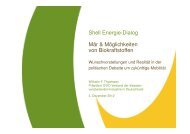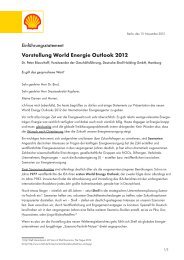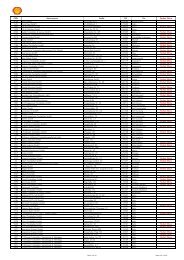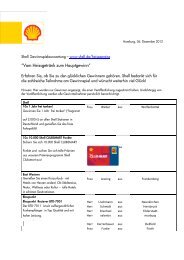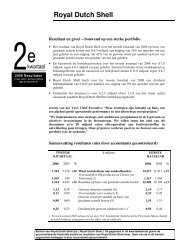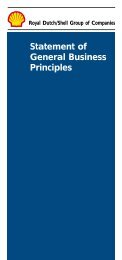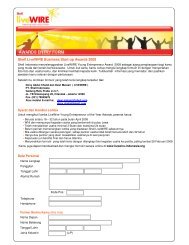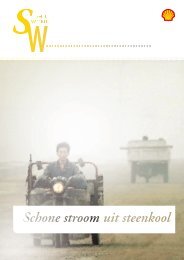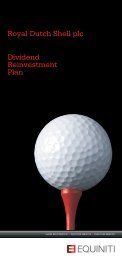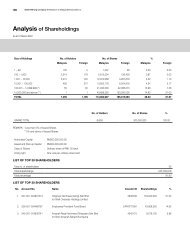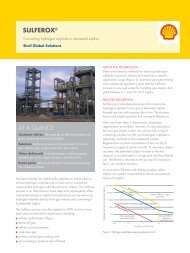ENVIRONMENTAL STATEMENT BARDOLINO DEVELOPMENT
ENVIRONMENTAL STATEMENT BARDOLINO DEVELOPMENT
ENVIRONMENTAL STATEMENT BARDOLINO DEVELOPMENT
Create successful ePaper yourself
Turn your PDF publications into a flip-book with our unique Google optimized e-Paper software.
Bardolino Development Environmental Statement<br />
SPL(r) = SPL(source) –N log(r)<br />
SPL=SL-TL<br />
where SPL is Sound Pressure Level, r is distance from the source, N is the transmission loss<br />
coefficient, SL is the source level and TL is the transmission loss (both measured in dB).<br />
The model scenario was based on a sound level at source of 194 dB @ 1m at a frequency at<br />
source selected as the frequency at which the species shows most sensitivity within the range<br />
of 300-1000 Hz, and a single noise source was considered (Nedwell et al., 2005). The<br />
transmission loss coefficient was assumed to have a value of 22 (reflecting depth of water).<br />
Absorption loss coefficient was calculated using the formula from Erbe & Farmer (2000):<br />
α =<br />
2<br />
2<br />
−3<br />
0.<br />
11 f 44 f<br />
−4<br />
2<br />
3. 3×<br />
10 + + + 3.<br />
0 × 10 f<br />
2<br />
2<br />
1+<br />
f<br />
4100 + f<br />
The scenario details for the model runs are provided in Table 6.10.<br />
Table 6.10: Scenario details for the model runs to assess the potential impacts during<br />
piling operations at the Bardolino location<br />
Scenario Species<br />
Sound level<br />
at source<br />
(dB at 1m)<br />
Frequency at<br />
which<br />
species<br />
shows most<br />
sensitivity<br />
(Hz)<br />
Threshold value<br />
for species<br />
derived from<br />
audiogram (dB)<br />
Predicted level at<br />
which TTS may<br />
occur (dBht)<br />
1 Harbour porpoise 194 1,000 80 140<br />
2<br />
Bottlenose<br />
dolphin<br />
194 700<br />
91<br />
140<br />
3 Killer whale 194 500 100 140<br />
4 Minke whale 194 400 34 124<br />
Source: Nedwell et al., 2005<br />
Thresholds for response to noise:<br />
For the purposes of assessing the potential effects of the proposed Bardolino development on<br />
marine mammals, the EIA focused on determining which activities might produce noises loud<br />
enough to result either in an animal displaying a “strong avoidance reaction”, or to cause a<br />
temporary change in hearing ability (a “temporary threshold shift (TTS)). The threshold for<br />
“strong avoidance” was selected because it is the lowest level at which overt behavioural<br />
changes occur. The TTS level was selected because it is the least damaging of the possible<br />
physical effects and would be found over the largest area in which physical effects might<br />
occur. It is therefore the most precautionary physical threshold.<br />
Noise modelling results<br />
Figures 6.1 to 6.4 show the results of the modelling which demonstrate the variation in<br />
perceived sound level with distance from the noise source for the four marine mammals<br />
studied (BMT Cordah, 2008a).<br />
April 2008 Page 6-25


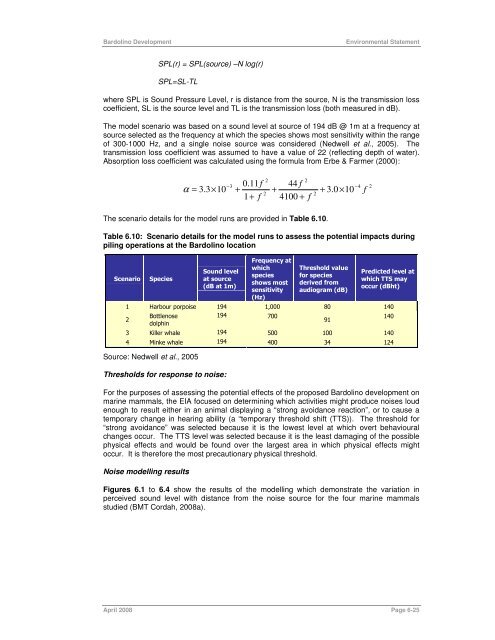
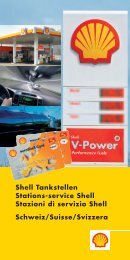
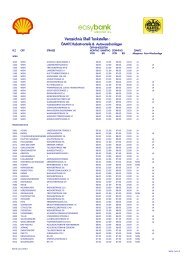
![Download Shell AutoGas Stationen [Stand: Januar 2013] (PDF](https://img.yumpu.com/9982753/1/190x245/download-shell-autogas-stationen-stand-januar-2013-pdf.jpg?quality=85)
